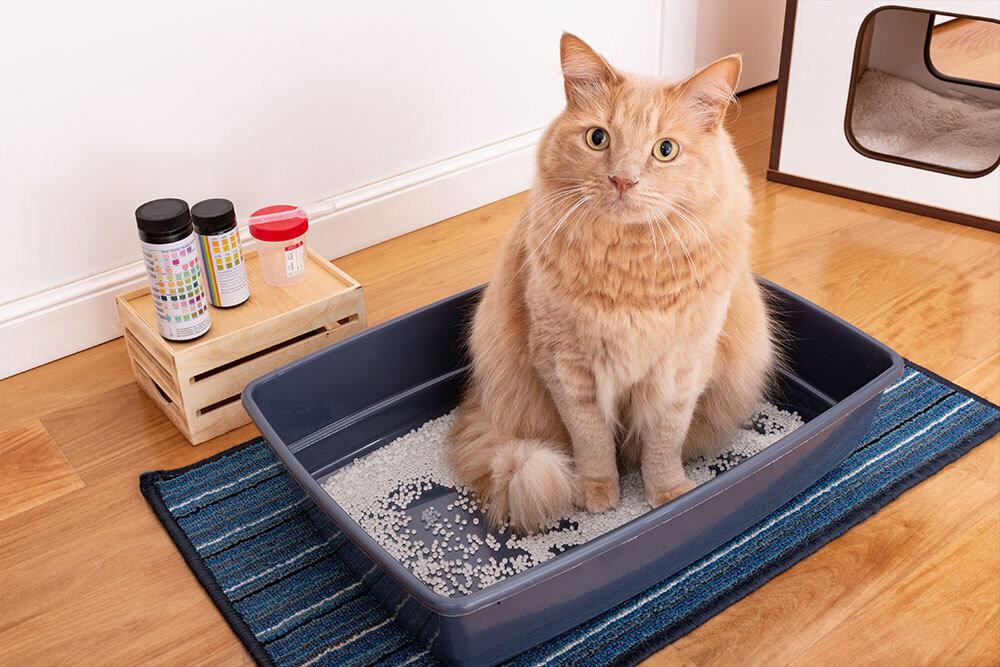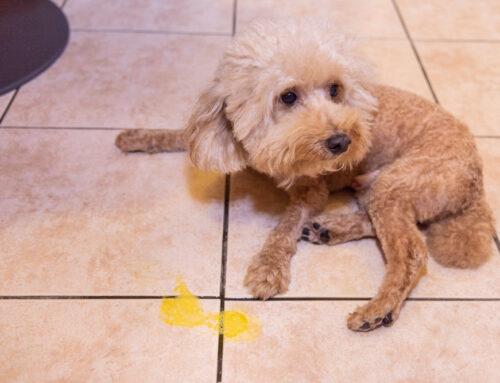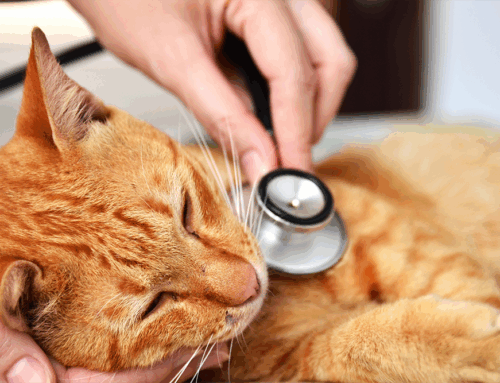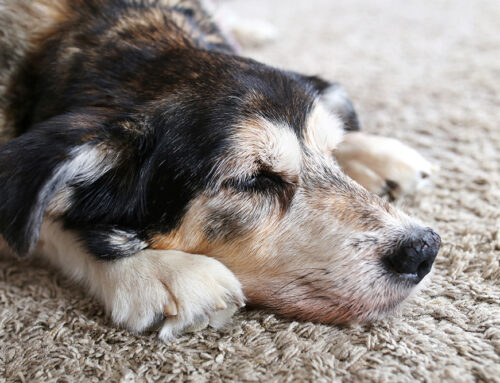FLUTD in Cats: Recognizing Painful Urinary Symptoms and What to Do Next
Few things worry a cat owner more than hearing strained cries from the litter box or discovering accidents outside it. Changes in a cat’s urinary habits can be stressful, confusing, and sometimes urgent. At the Veterinary Emergency and Specialty Center of Northern Arizona in Flagstaff, AZ, guiding families through feline urinary challenges is a priority. One of the most common culprits behind these distressing symptoms is Feline Lower Urinary Tract Disease, or FLUTD.
What Is FLUTD?
FLUTD is not one single condition. It is an umbrella term that covers various disorders affecting a cat’s bladder and urethra. From inflammation to urinary stones and obstructions, these issues can be painful and, in some cases, life-threatening. Understanding what might be happening is the first step toward managing your cat’s health and comfort.
Common Causes of FLUTD in Cats
There is no one-size-fits-all answer when it comes to FLUTD. Some of the more common causes include:
- Feline Idiopathic Cystitis (FIC): The most frequent cause, FIC involves bladder inflammation without an obvious underlying disease. Stress is often a major trigger. Learn more about FIC in cats.
- Bladder Stones (Urolithiasis): Small mineral formations can irritate the bladder lining, cause discomfort, and obstruct urine flow. More information on urinary stones.
- Urethral Plugs: A buildup of mucus, crystals, and cells that can block the urethra, especially in male cats.
- Urinary Tract Infections (UTIs): Less common in younger cats but a concern in older cats. Read more about UTIs in pets.
- Structural Abnormalities or Tumors: Rare, but growths or anatomical changes can interfere with normal urination.
Stress often plays a key role in many cases, particularly FIC, which is why a holistic look at your cat’s environment is so important.
Why Prompt Care Matters
Left untreated, FLUTD can escalate from discomfort to a complete urethral obstruction. Male cats are especially vulnerable because their narrow urethras clog quickly. A blockage becomes life-threatening within hours; pressure builds, toxins accumulate, and the bladder can rupture, leading to kidney failure or death. Fast intervention—intravenous fluids, pain control, and catheterization—restores urine flow before permanent damage occurs.
The team at Veterinary Emergency and Specialty Center of Northern Arizona has the equipment and expertise to decompress the bladder, analyze urine, and stabilize critical patients on arrival, turning a potential catastrophe into a manageable recovery.
Beyond the physical pain, chronic urinary trouble triggers litter-box aversion and household stress. Each painful attempt to urinate convinces a cat that the box is the source of harm, prompting accidents elsewhere in the home. Early treatment preserves bladder health and protects the human–feline bond.
How to Spot the Signs
Cats are masters at hiding discomfort, but FLUTD often reveals itself through:
- Straining in the litter box
- Frequent attempts to urinate with little or no output
- Blood-tinged urine
- Crying or vocalizing during urination
- Excessive licking of the genital area
- Accidents outside the litter box
- Hiding, reduced appetite, or vomiting
In male cats, signs of lethargy, collapse, or a hard, distended abdomen may signal a dangerous obstruction. Learn about urethral obstruction in cats and what to watch for.
How FLUTD Is Diagnosed
When you bring your cat to Veterinary Emergency and Specialty Center of Northern Arizona, the team will perform a thorough exam and may recommend:
- Urinalysis: To check for blood, crystals, and signs of infection.
- Urine Culture: To identify bacterial infections.
- Bloodwork: To evaluate kidney function and check electrolytes.
- X-rays or Ultrasound: To detect bladder stones or anatomical issues.
- Cystoscopy: A small camera to look inside the bladder if needed.
These tests help determine the exact cause and the safest, most effective treatment plan.
Treatment Options for FLUTD
Treatment depends entirely on what is found during diagnosis. Here are some common steps:
Medical Management
- Pain Relief: Cats with FLUTD often need pain medication and anti-inflammatories.
- Antibiotics: Only if a bacterial infection is confirmed.
- Muscle Relaxants: To reduce urethral spasms and help urine flow.
- Urine pH Modifiers: Help dissolve crystals or prevent new ones.
Dietary Changes
A diet designed to manage FLUTD can make a big difference. Many cats benefit from prescription foods that help dissolve stones or prevent crystal formation. Wet food and water fountains can increase hydration naturally. For more details, see Royal Canin’s FLUTD guide.
Obstruction Relief
For cats with a blockage, immediate care includes:
- Urinary Catheterization: To relieve the blockage and empty the bladder.
- IV Fluids: To flush out toxins and rebalance electrolytes.
- Hospital Monitoring: To prevent complications and recurrence.
Cats with repeated blockages may be candidates for Perineal Urethrostomy (PU) surgery, which widens the urethra to reduce the risk of future obstructions.
Stress and Environmental Support
Because stress is a common trigger, environmental enrichment and routine can help. Consider:
- Pheromone diffusers to promote calm.
- Puzzle feeders, toys, and window perches.
- Routine and predictability at home.
What Happens if FLUTD Is Ignored
Without proper treatment, FLUTD can lead to:
- Recurrent painful episodes
- Permanent bladder damage
- Kidney failure
- Bladder rupture
- Ongoing litter box problems and household stress
Addressing the problem early saves you worry and keeps your cat more comfortable.
Daily Life with a Cat Prone to FLUTD
Caring for a cat with FLUTD often means becoming more observant. Small changes like extra water bowls, choosing the right diet, and reducing household stress can make a big difference. It can feel overwhelming, but many cats live long, happy lives with good management.
Prevention Tips for FLUTD
Some strategies can reduce the risk of flare-ups:
- Hydration: Offer wet food, water fountains, and multiple water bowls.
- Balanced Diet: Prescription diets may help dissolve crystals or prevent new ones.
- Stress Reduction: Keep a predictable routine and enrich your cat’s environment.
- Litter Box Hygiene: One box per cat, plus one extra, cleaned daily.
For more insight into how stress impacts urinary health, check out FIC research.
Preparing for Your Vet Visit
Help your veterinary team by bringing:
- A fresh urine sample if possible.
- A list of all your cat’s medications, supplements, and current food.
- Notes on any changes in behavior or litter box use.
- Videos or photos of unusual behaviors.
Smart Questions to Ask
- What is causing these symptoms?
- What tests do you recommend?
- What diet should my cat be on?
- Is surgery a possibility for my cat?
- How can I help prevent future episodes?
Frequently Asked Questions
Is FLUTD contagious? No. While infections may have infectious components, FLUTD itself does not spread between cats.
Can stress really cause urinary problems? Absolutely. Stress is a major trigger, especially for idiopathic cystitis.
Will my cat need lifelong treatment? Some cats experience occasional flare-ups, while others need long-term management.
How can I get my cat to drink more water? Try fountains, flavoring water with broth, and feeding wet food.
When to Call for Help
Straining, frequent trips to the box, vocalizing, or a sudden drop in urine output all warrant immediate attention. The emergency clinicians at Veterinary Emergency and Specialty Center of Northern Arizona specialize in rapid diagnostics and obstruction relief, guiding owners from first phone call to safe discharge. Review common urinary tract symptoms and keep the center’s number—928-438-0410—saved to your phone.
If any warning signs appear, we’re here to help without delay. Prompt, expert care protects kidneys, relieves pain, and restores comfort for both cat and caregiver.








Leave A Comment